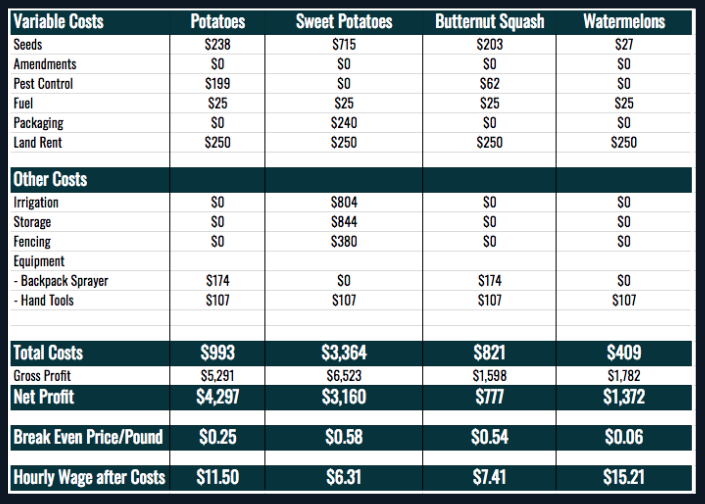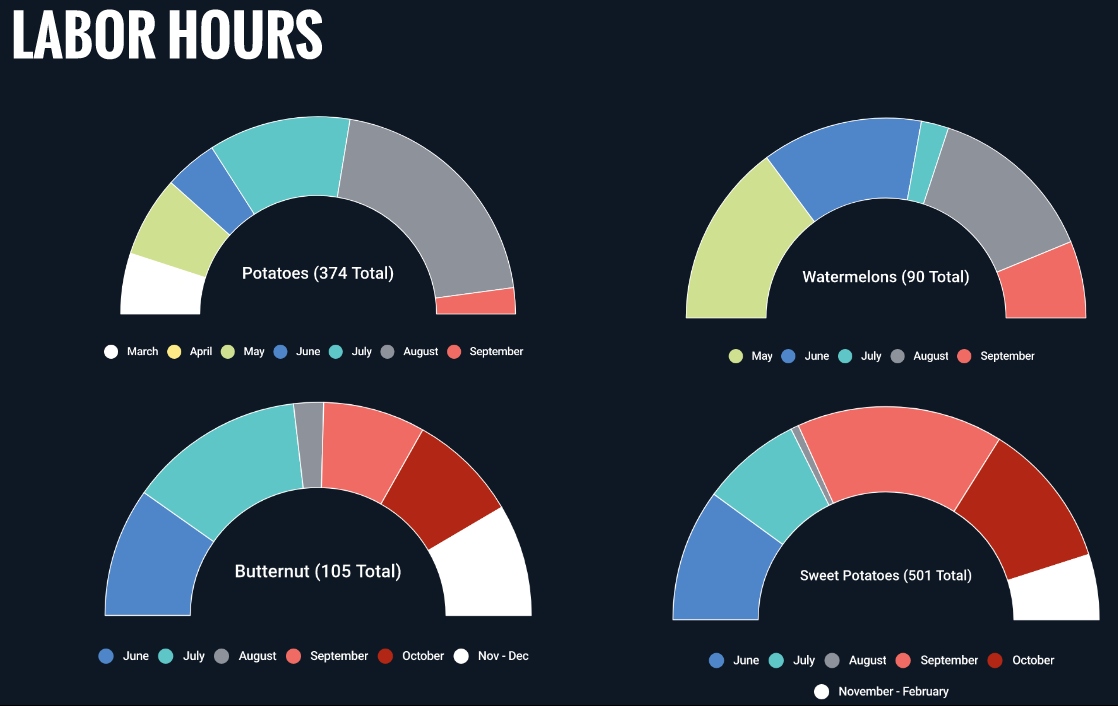Project Overview
Annual Reports
Commodities
- Agronomic: potatoes
- Fruits: melons
- Vegetables: cucurbits, sweet potatoes
Practices
- Crop Production: cropping systems, intercropping, multiple cropping
- Education and Training: farmer to farmer, on-farm/ranch research
- Farm Business Management: agricultural finance, budgets/cost and returns, business planning, feasibility study, labor/employment
- Sustainable Communities: community development, employment opportunities, local and regional food systems
Summary:
The Mid-MO Growers Group formed as a partnership with a vision of growing vegetables collaboratively in central Missouri. With less than one percent of the state's agricultural land currently used for vegetable production (USDA Census of Agriculture 2012), we see potential to diversify production systems to incorporate more direct-to-market vegetable crops. In theory, this would support higher profits per acre, more jobs, and a more robust local food system. Our SARE project assesses the productivity and profitability of low-input crop systems on a property recently transitioned from commodity crop production in the Missouri River bottomlands. Our data and findings offer region-specific data for production costs, yields, and profits on a per-acre scale.
The team did extensive research on varieties, methods for planting, weeding, harvesting, post-harvest handling, and marketing prior to the final crop selection and layout. We initially selected potatoes, sweet potatoes, butternut squash and dry black beans for our assessment. We planted potatoes in late March and sweet potatoes, butternut squash, and black beans during the first weeks of June. Shortly after planting, we lost our black bean crop to herbicide drift. We had another acre in watermelons at the site, so we chose to add that crop to our assessment in place of beans.
Our research approach involved extensive data collection throughout the farm season. To start, we documented all inputs associated with our production system for each crop, including land rent, seeds, pest control, fencing, irrigation, and small equipment such as hand tools. Each member of the group also tracked tasks and time dedicated to the farm in a shared spreadsheet. This record later allowed us to calculate labor demands for each of our selected crops. During the growing season, we recorded harvest yields and sales of all marketable produce. Post-harvest, we added input costs for storage and packaging.
We used the data collected throughout the season to build enterprise budgets for each crop. We also estimated hourly wages based on our task data and net profits. The chart below summarizes the total costs, gross and net profits, break-even prices, and wages for each crop.

Profits per Acre
We used our data to compare the profits per acre from vegetable production to those typically achieved by corn and soybean production. According to the 2017 enterprise budgets provided by the Food and Agricultural Policy Research Institute at the University of Missouri, average gross incomes per acre for Missouri corn and soybeans were estimated at $459 and $444 respectively. After operating costs, income per acre was estimated at $135 for corn and $242 for soybeans. The gross and net profits in the chart above are our comparable profits per acre for potatoes, sweet potatoes, butternut squash and watermelon. In all cases, our profits were higher.
Jobs
The four farmers participating in this project worked a collective 1,070 hours from the time the field was prepped in March until the last produce was delivered in February of 2016 - approximately 27 full-time weeks.

From our task data and net profits, we were able to calculate the hourly wages for participating farmers. These varied greatly based on the crop, ranging from $6.31 for sweet potatoes to $15.21 for watermelons, with an average of $8.98 across all crops. We compared these figures with MIT's Living Wage Calculator. In Missouri, minimum wage is $7.85 and a living wage is considered to be $10.76. We fell somewhere in between these two figures, though it's worth noting that there were many lessons learned - detailed in the latter sections of this report - that would likely lead to greater efficiency, improved production, higher profit margins, and better wages in subsequent years of farming. As of 2018, two of the four participating farmers have gone on to farm full-time, one part-time, and one is no longer farming.
Local Food System
We grew and harvested approximately 18,000 lbs of produce in 2015. We marketed and sold all of it within 150 miles of our farm. Initially, we focused on Boone and Cole counties in Mid-Missouri. Later in the season, we expanded our marketing to the St. Louis area. Our primary market was wholesale to restaurants and grocery stores in Columbia and St. Louis. We sold a small percentage of our produce through an online shop and local farmers markets. Much of our produce was sold at a premium price. Our buyers were representative of a new wave of restaurants and groceries that have no problem paying a higher price for local produce, because its quality and freshness sets them apart from other businesses. Also, many successful restaurants and specialty grocers we work with agree that sourcing locally is an ideal way of doing business because it keeps money in the local economy, provides income for honest producers and strengthens community.
Project objectives:
Economic benefits: To assess the economic benefits, we collected data on vegetable crop yields and compared them to similar cropping operations around the country. We created cost-of-production estimates for each crop and used them to build locally-relevant enterprise budgets that we share with farmers in our community. We calculated our average per-acre return for the crops and compare them to commodity crops grown on similar soils, demonstrating the higher profits achievable through diversified vegetable production. Our final figures for labor hours needed to operate the vegetable cropping system support decision making around hiring laborers or pursuing farming as a part or full-time occupation.
Social benefits: To catalog the social benefits of our project, we recorded attendance at the on-farm and community field events. We also recorded attendance at “cropmob” workdays, where people from the local community were invited to help with labor-intensive days such as planting and harvest. Numbers from our website and social media accounts gauge interest in our project and demand for locally-grown vegetables in our region. We presented our findings at two events - one a public presentation in Columbia, MO and another at the annual Mid-America Organic Association Conference in Independence, MO. Our outreach efforts strengthen connectivity with the broader farming community. We know that livelihoods in small-scale sustainable agriculture provide people with a greater connection to the land on which they live and their local food system. Our project relied heavily on the involvement of friends, family and community members, and we continue to engage interested parties across the region in a conversation about the feasibility of increasing local food production in Mid-Missouri.
Outreach: We collaborated with the Missouri Young Farmers Coalition (MOYFC) and the Columbia Center for Urban Agriculture (CCUA) to organize two on-farm educational events in the summer of 2015 and to host a community-wide event to present our results and demonstrate, distribute, and train farmers to use the budget enterprise models. We built a simple, accessible webpage that will be home to periodic updates, various multimedia content, and eventually a summary report and the customizable budget enterprise models. The results of our project, including the summary report and associated enterprise models, will be posted on our own site, linked via partner websites, shared via email across several local email list serves focused on small scale agriculture and local food, and disseminated via social media. Follow-up support will be provided to anyone interested in learning more about the crop systems, budget tracking procedures, or enterprise budgeting.